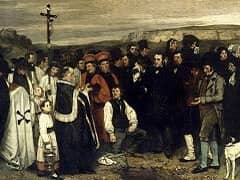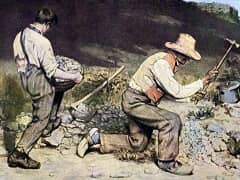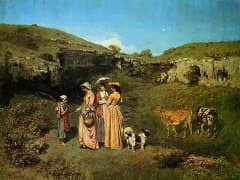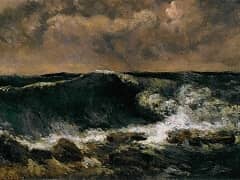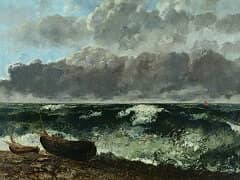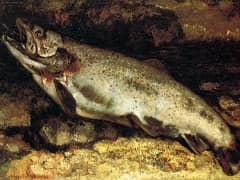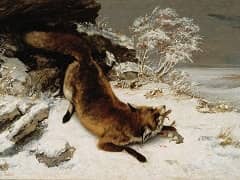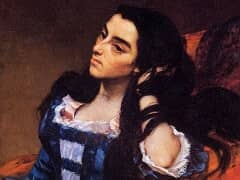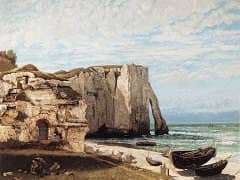The Houses of the Chateau D'Ornans, 1853 by Gustave Courbet
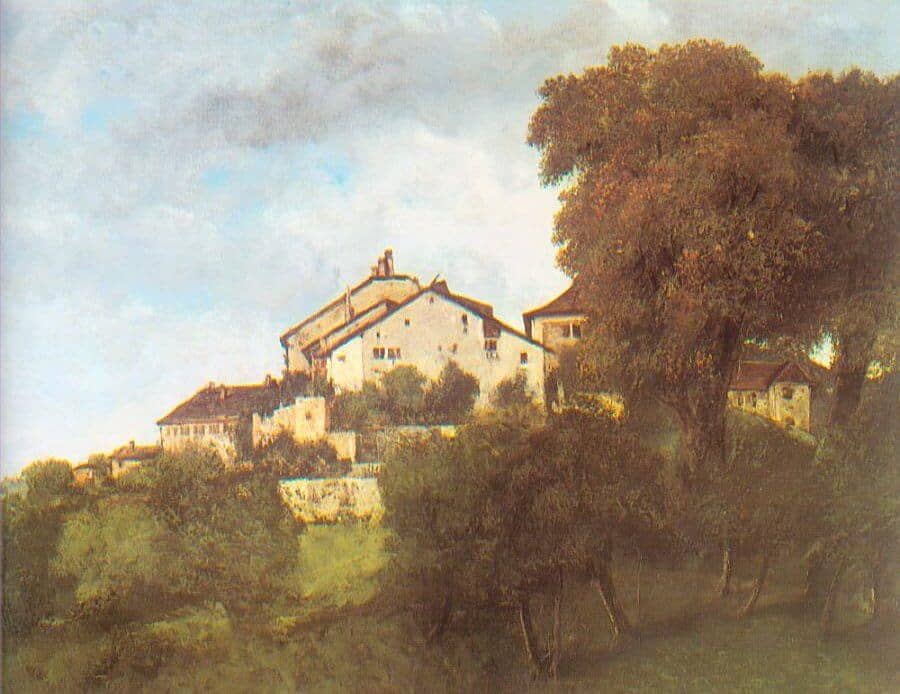
Not far outside Ornans rises the chalky escarpment of the Chateau d'Ornans, one of the limestone cliff formations typical of the Doubs region and a favorite painting site for Courbet. Its profile can be clearly seen at the left horizon of A Burial at Ornans. But here the painter approaches more closely the little group of stone houses that had been constructed out of the ruins of the castle that gave its name to the hill. Built in the thirteenth century by the powerful dukes of Burgundy, who held the region in fief to the kings of France, the castle was destroyed in the seventeenth century by Cardinal Richelieu, acting to protect the authority of Louis XIII against the independent and unreliable nobility of the region. Local people had built a small hamlet out of the ruins of the castle. The historical connotations of the Chateau d'Ornans - the tough independence of the Franche-Comte vis-a-vis central government, and the sturdy survival of its ordinary people - were thus of a kind to enrich Courbet's spontaneous visual and physical appreciation of the site.
This painting is interestingly atypical in that it focuses on the structure of buildings. Courbet was not a painter of towns, and he is more likely to treat the verticality of the local cliffs as a kind of castle made by nature to oversee the land and thus act as a metaphor for the strength of its people. But having chosen this view, coming upon the hamlet from the back, so to speak, he responds powerfully to the geometry of the structures, to the way in which the larger forms are interlocked with the smaller ones. One associates the motif more with Corot, but Courbet treats it in his own manner. The forms are built up in layers of actively applied paint that respond variously to the light just as the actual plaster-covered rough stone walls would do. That same activity of paint application, with palette knife as well as brush, escalates in the construction of the vegetation and the trees. The depth and richness of the foliage is especially striking, as is the quality of the light emanating from the pigment of the sky. We see in this painting one of the best examples of Courbet's contribution to the landscape tradition that was being developed in his time: the liveliness and energy of the act of painting, which in turn communicates the larger idea of spontaneity and freshness of perception.



